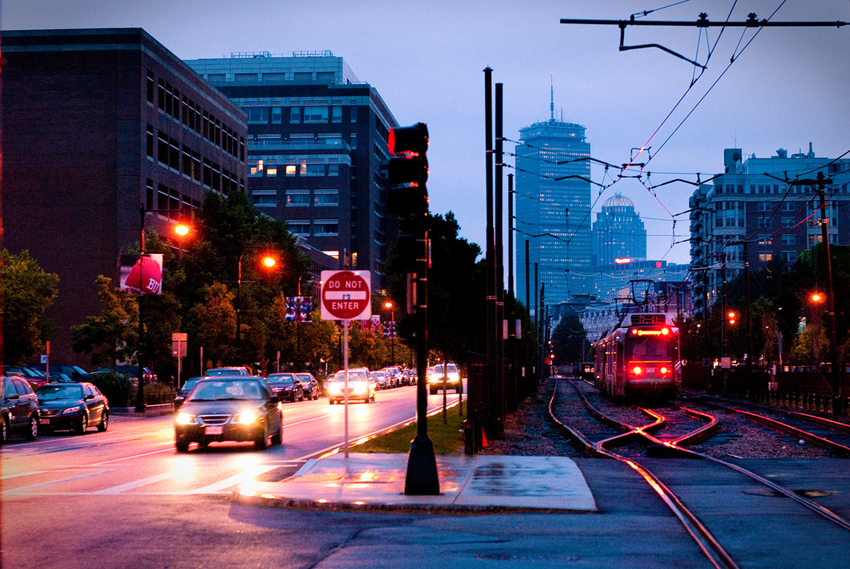Boston University, Mayor’s Office Roll Out Improved Bike-Safety Measures

Photo by Anders Young on Flickr
Following a series of bike-related accidents that claimed the lives of two Boston University students in the last year, city officials, in conjunction with B.U. authorities, announced improvements coming to Commonwealth Avenue to help protect those traveling on two wheels.
Cyclists traveling the busy road that bypasses the university can expect to see more “cautionary signs,” enhanced bike-lane pavement markings, and highway reflectors, according to Mayor Menino.
The improvements, put together by both the school’s administration and officials from the Mayor’s office, will serve as a pilot program with the potential of popping up in other parts of the city.
“I am hopeful that these changes will help protect bicyclists and pedestrians traveling along this very busy stretch of Commonwealth Avenue,” said Boston University President Dr. Robert Brown, in a statement. “I also am extremely grateful for the city’s continued support of bike-safety initiatives that safeguard all people who use the city streets that pass through our campus.”
When students return from Spring Break, B.U. officials will host an event to introduce students to the Commonwealth Avenue developments and safety measures. The meet-up will showcase and highlight the school’s bike-safety classes and give riders a chance to scoop up free helmets, flashlights, bicycle lights, and reflectors, according to a news release.
The tuned-up safety initiative comes after two bike fatalities along the strip of road that straddles the BU main campus.
In December, student Christopher Weigl, 23, was killed in a collision with a tractor-trailer at the intersection of St. Paul Street and Commonwealth Avenue. Weigl’s death marked the second BU fatality on the strip of road in just a few months, and was the fifth city-wide casualty last year.
A month prior, BU student Chung-Wei Yang, an international relations major, was killed in a bike accident involving an MBTA bus not far from where Weigl crashed.
The same day as Weigl’s accident, City Council members met to discuss ways to make the roads safer for cyclists in Boston by possibly rolling out separated bike lanes. Not long after the meeting, Boston brought back Nicole Freedman, the Hub’s “bike czar,” to continue her role as the city’s director of bicycle programs.
According to Menino’s office, “Boston has worked hard to ensure that cycling is a viable option for traveling on … local streets.”
In 2008, the city installed four-and-a-half miles of bicycle lanes, and today there are more than 58 miles of on-street accommodations for cyclists. In 2011, the city upped the ante and launched the Hubway bike-sharing program, providing 600,000 trips to riders.
“As a result of these efforts, bicycle commuting ridership increased 82 percent in Boston from 2007 to 2011,” Menino said.
Boston magazine reached out to officials in the mayor’s office, and Northeastern University, to find out if similar precautions and roadway improvements would be set in place along Huntington Avenue, but calls were not immediately returned.
During the summer of 2012, a student cyclist was killed after colliding with an MBTA vehicle. It was the second time in less than five years that a cyclist was killed at the same intersection on the stretch of road, according to reports.


